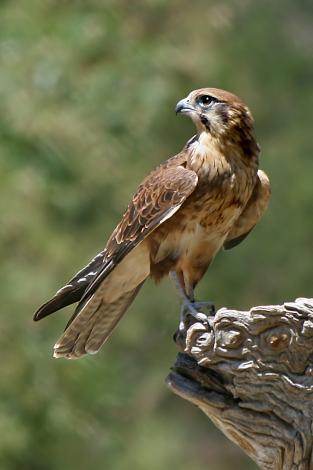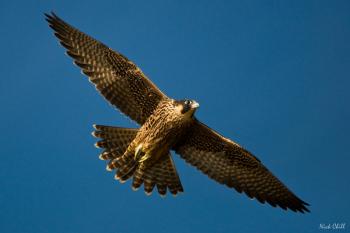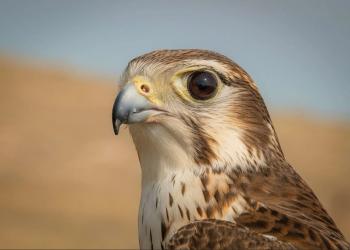
Falcons are sleek, beautiful birds of prey. The body of a falcon is shaped to help it go as fast as possible. A diving peregrine falcon can go more than 200 miles per hour. Falcons catch prey with their feet. But where other birds of prey often kill with their talons, a falcon uses its beak which has a strong sharp hook at the tip. All of these things make falcons deadly hunters. Some falcons will eat almost anything, but some are more particular. For example, the laughing falcon only eats snakes. The largest type of falcon is the gyrfalcon which can have a wingspan of over 4 feet long.
Because falcons are both extremely smart birds, and are known for their hunting skills, long ago people started training them. Hunting using birds of prey is known as falconry. Falconry dates back to around 2,000 BC. It was a highly popular sport and status symbol among the nobles of medieval Europe and Asia. Trained falcons and other birds of prey like hawks were extremely valuable, and often presented as gifts to nobles or royalty. Falconry is still practiced to this day, although now there are many more regulations that govern the sport.
Falcons can be found almost everywhere on earth. Some falcons even live in the arctic! Peregrine falcons used to be on the endangered species list because of the use of pesticides, especially DDT. But since DDT was banned in the early 1970s, populations have recovered. There have also been protections put in place, and breeding programs with the goal of reintroducing falcons back to the wild.
These articles are written by library staff using library resources such as books, eBooks, and databases. Information can vary from book to book and database to database. Tickle Your Brain is meant to be a jumping off point for starting conversations about new topics of learning. It is not to be used as an authoritative resource.


- A falcon’s fast dive is called a stoop.
- Several species of small falcons are known as falconets. The tiniest falconets live in southeast Asia and can be just 5.5 inches long.
- Black-thighed falconets often give one another leaves as gifts.
- A peregrine falcon’s heart can beat up to 900 times in one minute.
- Kestrels are known for how they hunt. These falcons can hover in the air before plunging in a stoop to catch their prey unaware.
- Some falcons can catch two birds at one time.
- Falcons, by Connor Stratton
- Birds of Prey: Hawks, Eagles, Falcons, and Vultures of North America, by Pete Dunne
- Falcon Wild, by Terry Lynn Johnson
